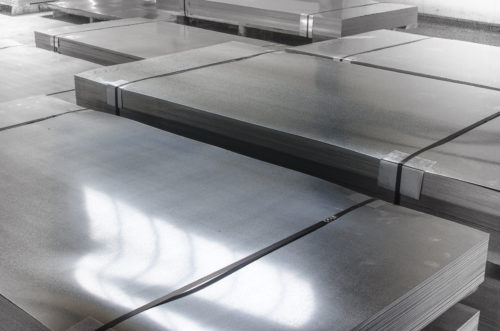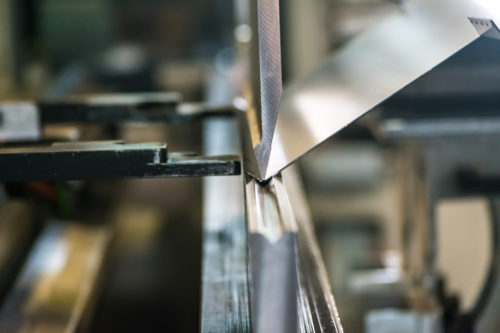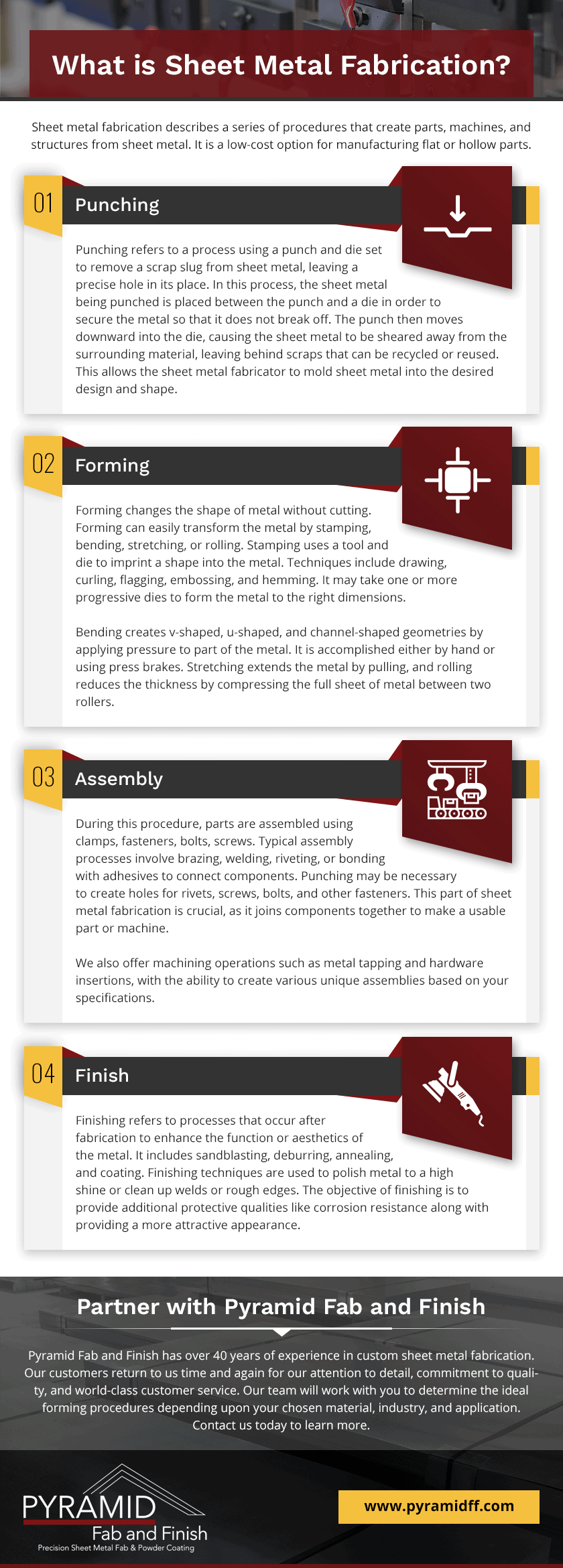 Sheet metal fabrication involves a variety of procedures, such as cutting, forming, assembly, and finish, that transform sheet metal into working components for numerous applications. This highly valuable production process is compatible with a wide range of materials and can accommodate production runs. To gain a better understanding of sheet metal fabrication, this page will provide an overview of each step of the process.
Sheet metal fabrication involves a variety of procedures, such as cutting, forming, assembly, and finish, that transform sheet metal into working components for numerous applications. This highly valuable production process is compatible with a wide range of materials and can accommodate production runs. To gain a better understanding of sheet metal fabrication, this page will provide an overview of each step of the process.
What Is Sheet Metal Fabrication?
Sheet metal fabrication describes a series of procedures that create parts, machines, and structures from sheet metal. It is a low-cost option for manufacturing flat or hollow parts. Fabrication shops use sheet metal manufacturing processes to serve a variety of industrial and consumer applications across industries such as aerospace, energy, robotics, and automotive.
Sheet metal fabrication transforms the metal to meet the specific project requirements. Common material options include:
- Steel is known for its strength and durability.
- Lightweight, strong, and formable at lower temperatures, aluminum is used in aerospace, refrigeration, and many other industries.
- Copper is a decorative metal, but it also has useful properties for forming, including malleability, electrical conductivity, and corrosion resistance.
Cutting is a subtractive process that removes sections of the metal with or without shear. Methods include cutting, blanking, and shearing. Shear cutting is best for parts that don’t require a high level of precision, such as nonindustrial products. Non-shear cutting is the preferred method for industrial products and utilizes techniques such as machining, laser cutting, waterjet cutting, and plasma.
Contact Us
Forming
Forming changes the shape of metal without cutting. Forming can easily transform the metal by stamping, bending, stretching, or rolling. Stamping uses a tool and die to imprint a shape into the metal. Techniques include drawing, curling, flagging, embossing, and hemming. It may take one or more progressive dies to form the metal to the right dimensions.
Bending creates v-shaped, u-shaped, and channel-shaped geometries by applying pressure to part of the metal. It is accomplished either by hand or using press brakes. Stretching extends the metal by pulling, and rolling reduces the thickness by compressing the full sheet of metal between two rollers.
Assembly
During this procedure, parts are assembled using clamps, fasteners, bolts, screws. Typical assembly processes involve brazing, welding, riveting, or bonding with adhesives to connect components. Punching may be necessary to create holes for rivets, screws, bolts, and other fasteners. This part of sheet metal fabrication is crucial, as it joins components together to make a usable part or machine.
Finish
Finishing refers to processes that occur after fabrication to enhance the function or aesthetics of the metal. It includes sandblasting, deburring, annealing, and coating. Finishing techniques are used to polish metal to a high shine or clean up welds or rough edges. The objective of finishing is to provide additional protective qualities like corrosion resistance along with providing a more attractive appearance.
Partner with Pyramid Fab and Finish
The quality of your sheet metal products depends upon experience, training, and expertise. Pyramid Fab and Finish has over 40 years of experience in custom sheet metal fabrication. Our customers return to us time and again for our attention to detail, commitment to quality, and world-class customer service. Our team will work with you to determine the ideal forming procedures depending upon your chosen material, industry, and application. Contact us today to learn more.


